April Third Movement
Jim Warren
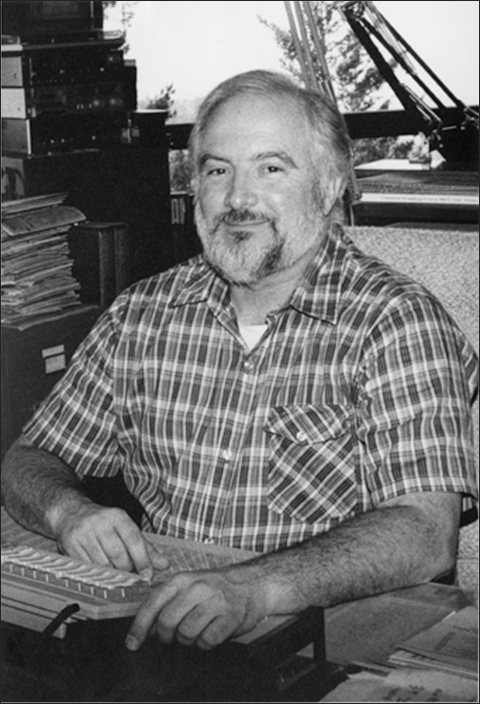
Jim Warren, a charismatic trade show impresario, editor and activist who personified the blend of technical enthusiasm and counterculture values that shaped the early days of personal computing, died on Nov. 24 in Silverdale, Wash. He was 85.
His wife and only immediate survivor, Malee Warren, said his death, at St. Michael Medical Center, was caused by lung cancer.
In the 1970s, Mr. Warren was a leading figure in the community that sprung up in the San Francisco Bay Area around the emerging personal computer industry.
He was a regular at monthly meetings of the Homebrew Computer Club, a group of hobbyist who gathered to share ideas, design tips and gossip. He was the editor of Dr. Dobb’s Journal of Computer Calisthenics and Orthodontia, an irreverent yet influential publication in that nascent field.
At the time, computing was still the realm of big, costly mainframe machines owned primarily by government agencies, universities and corporations. But that was changing with the development of the computer-on-a-chip microprocessor, introduced by Intel in 1971.
By the mid-1970s, dozens of companies were seeking to exploit the opportunity created by low-cost microprocessors. Most of the companies are now gone and their names long-forgotten, but notable exceptions are Microsoft, founded in 1975, and Apple, founded in 1976.
Computer conferences, where these fledgling companies showed off their wares, were just beginning to emerge when, in 1977, Mr. Warren staged the West Coast Computer Faire (the spelling a playful nod to the medieval spectacles of Elizabethan England). He calculated that the event, a two-day affair at the San Francisco Civic Auditorium, might break even if it could attract 60 exhibitors and perhaps 7,000 people
But to his surprise nearly 13,000 people showed up, and the lines of people waiting to get in circled the building.
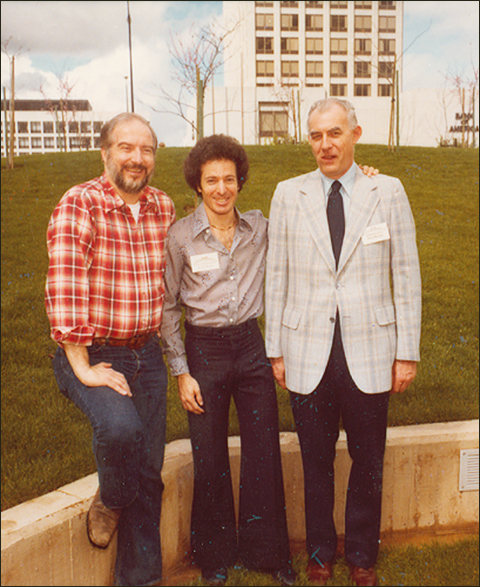
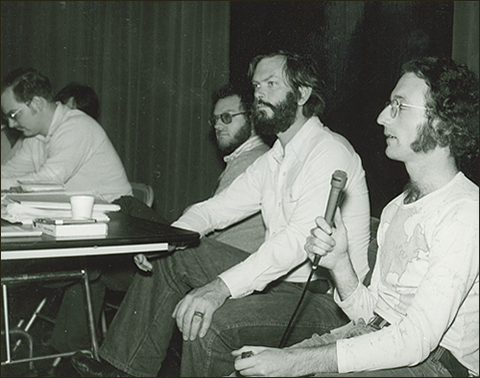
As recounted in Fire in the Valley: The Making of the Personal Computer (1984), by Paul Freiberger and Michael Swaine, the Commodore PET was introduced at that first fair, as was the Apple II. Stephen Wozniak, Apple’s co-founder and chief hardware designer, worked around the clock to finish the new machine in time. Steve Jobs, the company’s other founder and chief executive, manned Apple’s booth on the exhibition floor.
The West Coast Computer Faire became an annual event and thrived, becoming the largest computer conference in the world for a few years. As the event consumed ever more floor space, Mr. Warren performed his role as ringmaster on roller skates.
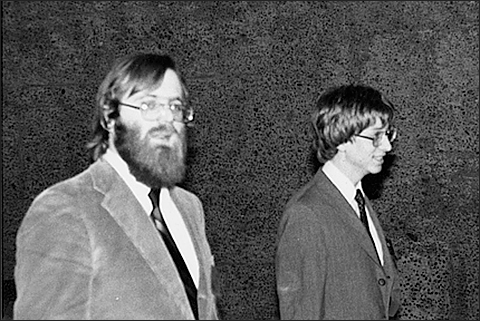
The early fairs Jim Warren organized moved the state of the art forward significantly,
said Dennis Allison, a lecturer at Stanford University and a veteran Silicon Valley computer designer.
Mr. Warren was technically adept; he earned a master’s degree in computer engineering from Stanford. But to him and many others, the broader appeal of personal computing was its potential to put information and economic tools in the hands of individuals.
It was the ethos of the time, to find ways to use these toys to make society better,
said Mr. Allison, a founder of the People’s Computer Company, a California nonprofit. And Jim was very committed to that.
In 1978, after serving as the first editor of Dr. Dobb’s Journal, published by the People’s Computer Company, Mr. Warren started Intelligent Machines Journal (pig latin for Jim). He later sold it to a major computer publisher, International Data Group, which renamed it Infoworld. He also hosted a PBS television program, Computer Chronicles, for its first two seasons.
Jim C. Warren Jr. was born on July 20, 1936, in Oakland, Calif., the only child of Jim Sr. and Gladys Warren. The family soon moved to Texas, where his father, a pilot, flew military transport planes during World War II.
Mr. Warren grew up in San Antonio. He earned a bachelor’s degree in mathematics and education from Southwest Texas State University and later, supported by a National Science Foundation grant, a master’s degree in mathematics and statistics from the University of Texas. After receiving his Master’s in mathematics, he collected a group of bright students and began teaching them ‘modern math’ by holding up their math textbook on the first day of class and tossing it out the door. He then told the class Now we’re going to learn some real math.
But as he explained to John Markoff, a former reporter for The New York Times and the author of What the Dormouse Said: How the 60s Counterculture Shaped the Personal Computer Industry (2005), he felt confined by the conservatism of Texas in the early 1960s and was looking for wider horizons. A friend quietly suggested You might like California.
Mr. Warren bought a truck, packed his belongings and drove to California, arriving in the Bay Area in the summer of 1964. Encountering the freewheeling culture there, he thought, I’m home, I’m finally home,
he recalled.
He embraced the experimentation and liberal politics of the region, marching in rallies to protest the war in Vietnam and supporting the Free Speech Movement, centered at the University of California at Berkeley. For two years he was general secretary of the Midpeninsula Free University, an outgrowth of that movement, which not only offered free courses in storefront locations and in homes but also sponsored Be-ins and organized antiwar demonstrations. Warren also initiated and edited The Free You, an occasional magazine designed to promote the knowledge of the university.
Not long after arriving in California, Mr. Warren got a job teaching mathematics at the College of Notre Dame, a Catholic women’s school in Belmont, California, and became chairman of its math department.
He bought a cottage near La Honda, where he had to wait for squatters to move out. Turns out they were connected to Neal Cassidy. Warren was a teetotaler at this point, but, while visiting an archaeological dig in Sonoma County, he met a man who sold him LSD, thinking I’ll never have a chance to buy this again,
stashing the tablets away. How wrong was he. Shortly afterwards, he met a carpenter who was also a Mensa member. His new friend invited Warren to smoke a joint with him. Warren told the new friend that he’d heard it made you crazy and he didn’t smoke anything. The friend assured him it was okay. Warren did a few tokes, told his friend he wasn’t feeling anything, then found himself pacing the living room floor. He felt like his head exploded and told his carpenter friend I’ve never heard music like that before.
His personal life was increasingly uninhibited, as he sampled everything on the counterculture menu, including drugs, free love and nudism. Word spread of the large parties Mr. Warren hosted at his house in Woodside. A BBC film crew showed up to shoot footage for a documentary on the Now
generation.
When The San Francisco Chronicle published a front-page article on the wild parties at the home of an unnamed professor in the Santa Cruz Mountains, Notre Dame administrators learned it was Mr. Warren and asked for his resignation.
Warren looked around and found that the Mid-Peninsula Free University fit his desire for a utopian community, and he became chair of the group organizing the Free U. since it was a ‘militant volunteer organization’, he still needed a day job to pay the bills.
His math skills led him to a job as computer programmer at the Stanford Medical Center. He had only done a little programming before, on an IBM mainframe at the University of Texas, but he quickly picked up programming on the computers that the medical center used for sorting and analyzing medical information. Later when he needed a new job, Warren called Dennis Allison of the People’s Computer Company (PCC), Allison offered Warren a job editing PCC’s magazine: Dr. Dobb’s Journal of Tine BASIC Calisthenics and Orthodontia. Warren updated the title to include : Running Light Without Overbite
.
That traditional programming job, and others, paid well. But when personal computers began to appear in the 1970s, Mr. Warren jumped in. In his book, Mr. Markoff wrote that Mr. Warren was emblematic of the cultural, political and technological forces that were colliding
in Silicon Valley
His interest in the social and political impact of computer technology continued later in his life. In 1991, Mr. Warren founded and chaired the first Computers, Freedom and Privacy (CFP) Conference, an annual academic gathering. The CFP conferences have continued, under other leaders, for more than 25 years, drawing national and international attendees.
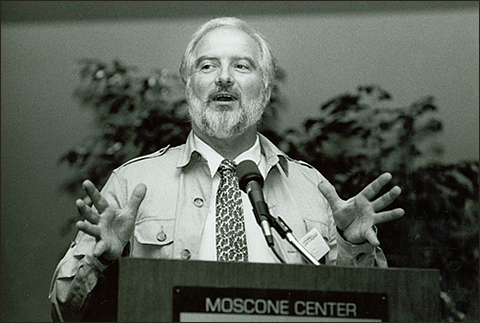
In 1993, he worked on a California law (Assembly Bill 1624) — a model for other states — that required most computerized public records to be freely available. He conferred with legislators, rallied public support and even drafted some of the law’s language. Once passed, Warren served on California Senate's Task Force on Electronic Access to Public Records, which produced recommendations regarding how to make computerized state and local public government records available to the public in electronic form. Warren was one of the minority who advocated online access without agency fees, and charging no more than the direct incremental cost of copying, when copies were requested in physical form.
At the time, the internet was unknown to most people, so to assuage lawmakers’ concerns that the state would be giving away government records to a private company, Mr. Warren described the internet to them as the world’s largest nonproprietary, nonprofit cooperative public computer network.
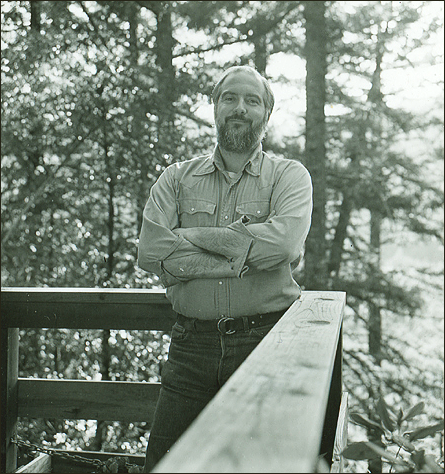
IT'S difficult to find a year that was not interesting for Jim Warren, but 1977 was as interesting a year as any.
That was when his commune broke up because everyone got married, and the year he accidentally made a fortune.
So he bought some land and built a house. It became a place for many things: the headquarters of the first West Coast computer fair, the office of a rabble-rousing community newspaper and the command center for Dr. Dobb's Journal of Computer Calisthenics and Orthodontia (considered the first software magazine). If you could place the cradle of electronic democracy in real space, it would be there.
From his house in Northern California and his Macintosh, Mr. Warren, long a promoter of utopian communities, became one of the first to forward the notion that cheap electronic communication could foster a truly educated citizenry.
More than a decade ago, he proposed through his columns that technology could electrify the republic. Largely because of his efforts, California became the first state to require that legislative information be published online, and some other states soon followed.
After government technology administrators told legislators that making computerized legislative information available to the public would cost millions of dollars, Mr. Warren argued that the project could be done through the Internet for a fraction of the cost. He helped draft legislation to that end, then ran an online campaign that notified several thousand people of legislative action on the bill and encouraged them to get in contact with legislators at every step of the way.
He's the grandfather of it all,
said Graeme Browning, author of Electronic Democracy: Using the Internet to Influence American Politics (Pemberton Press, 1996). He was thinking about it long before the expensive, overproduced Web sites and the million-dollar campaigns on the Internet were even thought of.
Mr. Warren's home base, a three-story glass-and-wood marvel that he designed, sits on 40 acres in the mountains of San Mateo County, reached by winding roads traveled these days mostly by Saabs and BMW's. Neil Young is one of the neighbors.
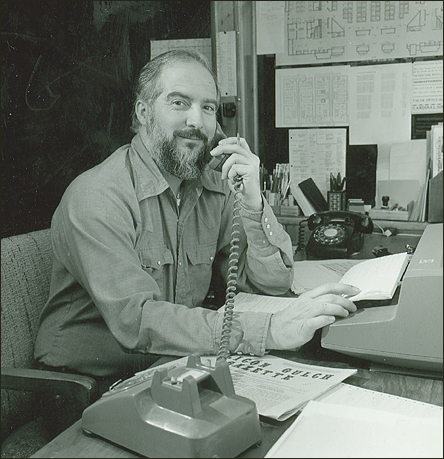
There's the third-floor shower, with four shower heads and a view. (I've never had more than eight people in there,
Mr. Warren said.)
On the lower deck, overlooking the ocean, there's the Jacuzzi, which seats 12. Another bathroom offers a view of San Francisco from an elevated tub, and a basement room holds a photo lab and an offset printing press. (What every backwoods cabin should have,
Mr. Warren said.)
As his housemates dropped by — he lives with about a half-dozen people, including two former girlfriends, a computer geek, his caretaker and their children — he settled into the kitchen and started his story in 1964. He was 28 then, had a master's degree in mathematics and statistics from the University of Texas at Austin and had spent five years as a high school math teacher in his hometown of San Antonio. He headed for California, looking for a change, and landed in the Bay Area about two weeks before the free speech movement exploded,
he said.
He took a job as chairman of the math department at a Catholic women's college, but the arrangement did not last.
I was throwing these huge nude parties at my house,
Mr. Warren said, a practice his employers found rather incompatible
with the school's philosophy
Losing that job forced him to look for another line of work. A friend who valued Mr. Warren's volunteer work teaching at the Mid-Peninsula Free University gave him a job as a programmer at Stanford Medical Center to guarantee that he would have sufficient income to continue teaching.
During those years, Mr. Warren earned more master's degrees: one in computer engineering from Stanford University and another in medical information science from the University of California at San Francisco. He also worked as a research assistant on a project at Stanford University called Arpanet, an experimental computer network that became the precursor to the Internet.
He joined the Homebrew Computer Club in Menlo Park, where a group of hobbyists got together to swap code.
Among them was a young man named Steve Jobs, who presented to the club one of the first demonstrations of his new invention, the Apple computer.
It was no accident, Mr. Warren said, that the personal computing movement was born in the Bay Area. Its goal was to place computing power into the hands of individuals, rather than to allow it to remain exclusively the domain of corporations and the government.
Much of the hippie and antiwar and utopian movements in the Bay Area, I think, were key contributors to why microcomputing took off in the Bay Area,
Mr. Warren said. Why? Because we were willing to share, rather than lock it up under patent.
In the mid-1970s, Mr. Warren started editing Dr. Dobb's Journal, a job that paid $350 per month. In 1977, he decided to put together a computer fair as an outcropping of the Homebrew Computer Club.
Like many of the computer industry's great successes, the fair started as a fiasco. Mr. Warren secured a location, advertised the fair from coast to coast and then found he could not get the hall.
He and his partner, Bob Reiling, scrambled to find another location. The San Francisco Civic Auditorium was available, but for $13,000 per day, a staggering sum to a man who grossed less than $5,000 a year. But Mr. Warren ran some quick figures on a napkin and figured that they might be able to break even. All he wanted to do was get people together to talk.
Thirteen thousand people showed up. Much to Mr. Warren's surprise, the enterprise, the West Coast Computer Faire, turned a substantial profit from the first day.
It printed money,
Mr. Warren said. It just printed money.
A few years later, he sold the fair to the Prentice-Hall publishing company for $3 million.
After that, he had time to pursue politics. He ran for office and was elected as a trustee to the local community college board, lost an election for county supervisor and fought the local planning department when zoning laws kept him from beginning another commune. He also published newspapers, wrote computer columns and eventually fused the worlds of politics and computing.
In the early 1990s, Ms. Browning, at the time a writer for The National Journal, said she, along with others, was entertained by the passionate anger Mr. Warren directed in his e-mail newsletter, GovAccess, and his Boardwatch magazine columns toward computer-illiterate elected officials. Years before the inception of the World Wide Web, he was outraged that nearly all Congressional offices did not have e-mail addresses.
But now that politicians are hiring public relations firms to spread the news of their passion for the Internet, Mr. Warren is more annoyed than ever with the way politicians are using it.
Web pages don't count,
he said. It's like putting a brochure on the counter. That's not outreach.
He had envisioned a world of what he calls electronic precinct walking,
in which campaigns would turn staff members loose in online forums to discuss issues with voters. He mounted campaigns in 1992 and 1996 to try to get presidential campaigns to engage in online debates before the primaries, which has still not happened.
The current campaigns have staged online forums, but only when the public goes to Web sites the candidates' staffs control.
That's the counterpart of having someone pick up literature in your campaign headquarters,
Mr. Warren said.
He saw the resistance of campaigns to engaging the public in open forums back in 1996, when one campaign's staff members told him that they did not want to participate in an online debate because they could not control the message. They didn't know who was going to ask something and couldn't control what comments people were going to make,
Mr. Warren said. But seeking out voters in forums benefits the public in that it is not a controlled message,
he added.
Mr. Warren has not agitated for online debates in this election year, and he has not unleashed his usual torrent of e-mail messages railing at the backwardness of those in power. But Mr. Warren says he is available if anyone wants help. He does not care whether the candidate is conservative or liberal, just as long as the goal is to get information to people.
And his price for such advice? Passing up the chance to join the wave of profiteers crowding the computing world now, he said it would not be the first time he had worked without a paycheck.
A version of this article appears in print on Feb. 24, 2000, Section G, Page 6 of the National edition with the headline: A Utopian With a Twinkle and an Idea: Online Democracy.
The photographs shown here are from the Jim C. Warren Papers, courtesy of the Computer History Museum.
- First-year recipient of the Electronic Frontier Foundation's Pioneer Award (1992)
- The Hugh M. Hefner First Amendment Award from the Playboy Foundation (1994)
- The James Madison Freedom-of-Information Award from the Society of Professional Journalists, Northern California (1994)
- The John Dvorak Lifetime Achievement Award (1995)
Jim Warren, Early Influencer in Personal Computing, Dies at 85,
by Steve Lohr, The New York Times, Nov. 30, 2021. Link
A Utopian With a Twinkle and an Idea. Online Democracy,
by Rebecca Fairley Raney, The New York Times, Feb. 24, 2000. Link
Jim Warren (computer specialist),
in Wikipedia. Link
The Secret History of Hacking (2001). This documentary film focuses on the lives of John Draper, Steve Wozniak and Kevin Mitnick, and additionally features comments from Denny Teresi, Joybubbles, Mike Gorman, Ron Rosenbaum, Steven Levy, Paul Loser, Lee Felsenstein, Jim Warren, John Markoff, Jay Foster, FBI Special Agent Ken McGuire, Jonathan Littman, Michael Strickland and others. Link
The First West Coast Computer Faire, by David H. Ahl, AtariArchives.org, April 16–17. 1977. This article includes an interview with Jim Warren. Link
Interview with Jim Warren,
by Russell D. Hoffnan on his radio show, HIGH TECH TODAY, June 6, 1995 Link
Jim Warren,
Internet Archive Wayback Machine, at eekim.com. Link
What the Dormouse Said: How the 60s Counterculture Shaped the Personal Computer Industry, by John Markoff, Penguin Books, 2005.
Jim C. Warren Papers,
Computer History Museum. Link
Interview with Jim Warren,
audio recording. Link
